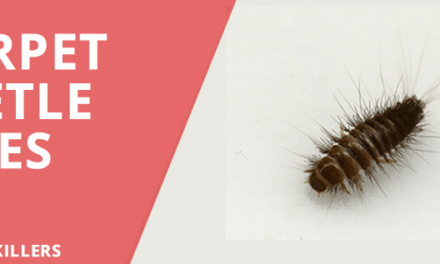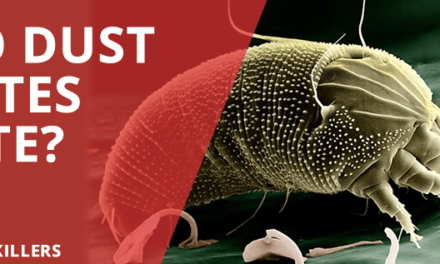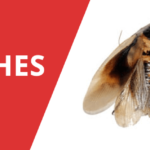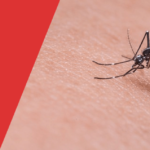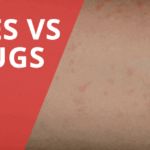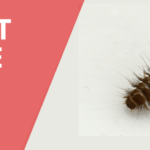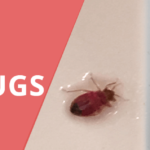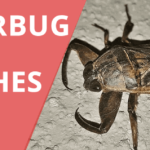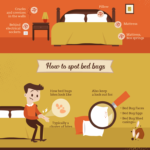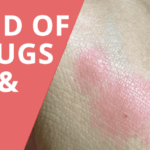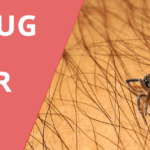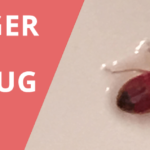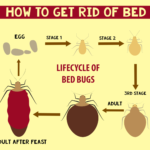Tick vs Bed Bug… aren’t they the same?
If you question a person off the street about ticks and bed bugs; after a puzzled look, they may tell you “aren’t they the same?”. But, that’s where the misconception lies.
What Are Ticks?

As mentioned above, ticks are arachnids (the class of spiders!) that are wingless, tiny ectoparasites; which mean they attach to a host, climb to the end of leaves, and attach themselves on any passing host. Ticks typically have eight legs and can be easily found hiding in leaves, shrubs, and plants due to their parasitic nature. Like any other arachnid, there are many different types of ticks such as the cattle tick or deer tick; they are classified into three families: hard ticks, soft ticks, and Nuttalliellidae.
How do Ticks Bite?
All ticks similarly feed on their victims; by inserting their pincers into the host and secreting an anticoagulant to prevent blood clotting; giving rise to bumps. Ticks move so easily and precisely due to their Haller’s organ; a sensory organ that allows ticks to detect odor and chemical changes.
What Are Bed Bugs?

Bed bugs belong to the class of insects and can be easily distinguished due to their rustic, reddish brown color, oval and flat structure, and six legs. Newly hatched bed bugs are usually colorless, with their exoskeleton translucent, and as they mature; their color darkens. Bed bugs are also known to reproduce rapidly.
You can probably guess by their name, that the most common place to find bed bugs is…the bed. But more specifically, they hide in the crevices and cracks of couches, box springs, bed frames, and headboards. Bed bugs can survive in any type of furnitures such as a bed table, dresser, or any place from where they can get to their victim easily.
If you notice that the bites on you are mostly arranged in a line pattern or a cluster, chances are they are from bed bugs. If you find them on your face, neck, arms, and hands more than other places, that’s more evidence for bed bugs. Most bed bug bites itch and can lead to allergic reactions, but this depends on the individual.
Tick vs Bed Bug – Difference Table
| Feature | Tick | Bed Bug |
|---|---|---|
| Appearance | 8 Legs, No antenna | |
| Size | 1-2mm | 3-5mm |
| Habitat | Outdoors, high grassland | Indoors, bed area |
| Food | Human and animal blood | Typically human blood |
| Bite Appearance | Single bite | Multiple bites around the host’s body |
| When they are active | All the time | Early morning, late night |
Difference between Tick and Bed bug
There is a handful of differences between ticks vs bed bugs as outlined in the table above, but the two major differences are the following:
Habitat
When we talk about the habitat of both these microorganisms, there is a huge difference in their home of choice. Ticks are typically found in outdoor environments such as high grasslands, leaves, plants, shrubs, and weeds. If you are trying to locate them on a victim or your own body, focus on areas such as arms, stomach, hair and the area behind the ears.
On the other hand, bed bugs are predominantly found in pieces of furniture such as bed cracks, frames, and side tables. They can also be found in furniture close to the bed or cluttered areas. Basically, any place where they can conveniently hide and travel to their host from.
Bite marks
 But they all look like spider bites?…well..
But they all look like spider bites?…well..
Another major difference between ticks and bed bugs is their bite marks. If you notice a single bite which is itchy; it is probably from a tick as they typically stick to one spot until they are fully gorged. Tick bites are red but small and are close to one another.
Bed bug bites typically involve multiple bites, whose bites are usually in a pattern all over your body, and are more swollen and hard looking.
Similarities
There are few similarities between the two, mostly restricted to the choice of hosts and appearances.
- Both are flat, wingless parasites that are reddish-brownish in color and are considered microorganisms due to their microscopic size, and are oval and flattened creatures.
- Ticks and bed bugs both feed on animal and human blood, bed bugs prefer human blood over animals and the opposite is true for ticks, but they feed on the same species.
Symptoms of Ticks vs. Bed Bugs Bite
Appearance of Bites
When we talk about tick bites, they are characterized by a small cluster of dots that are incredibly itchy and are predominantly found on the legs and ankles. As mentioned earlier, ticks are known pathogens, which mean they can cause an infection. Tick bite marks are small and are light red in color.
Bed bugs bites are deep red, hard, and appear to be very swollen. They are itchy, but unlike ticks; the bites can be found all over the body in a pattern. A Bed Bug bite doesn’t result in an infection.
If you suspect a tick infestation coming from your pet or a nearby garden, they are most likely to be soft ticks and should be treated accordingly. To prevent a tick infestation on your body, there are various preventative methods you can take: To prevent a bed bug infestation, you can take the following preventative measures: If a tick infestation has already taken hold in your home, there are some added measures you can take to limit and eradicate the nuisance: If the bed bugs have already started to bite, take a deep breath. You can still handle a pest infestation by taking the following infestation handling tips: Tick Bites Treatment Most people infected with Lyme disease don’t develop the bull’s eye rash or a very distinctive spotted rash; they may go through the symptoms mentioned above. If detected earlier, these severe diseases can be subsided with an antibiotic course. Treating Infections Related to Bed Bug Bites Bed bugs infestations have become increasingly common due to increased travelling and hotel reservations. Compared to bed bugs, tick infestations are relatively less common but are may carry diseases. To summarize, there is actually a number of differences between bed bugs and ticks, but the one huge thing they share is that if ignored for a long time, they can really take a toll on your peace of mind. By now, you should be able to observe rashes and bumps on your skin, and quickly tell if it is a bed bug or a tick.
When ticks bite, the most common symptoms experienced involve:
When bed bugs bite, the swollen bites turn into a dark red spot which usually stops itching after a while. It is also interesting to note that bed bugs can live more than a year without feeding; this allows them to be highly selective about their victims.Prevention Tips
Infestation Tips

Treatment

Firstly, call or visit your doctor immediately if you observe the symptoms discussed earlier in this article. To elucidate further, the most defining symptom is a rash and then a rising fever.
Many other symptoms to look out for are vomiting, chest pain, abdominal discomfort, sore throat, severe rashes, and cough. These are all signs of a bacterial disease transmitted by ticks.

It is unlikely that you will develop an infection from bed bug bites as they aren’t pathogens. But you may develop a skin infection from scratching, for which you should consult your doctor and get a prescription for a well-suited antibiotic.Tick vs Bed Bug – Conclusion


